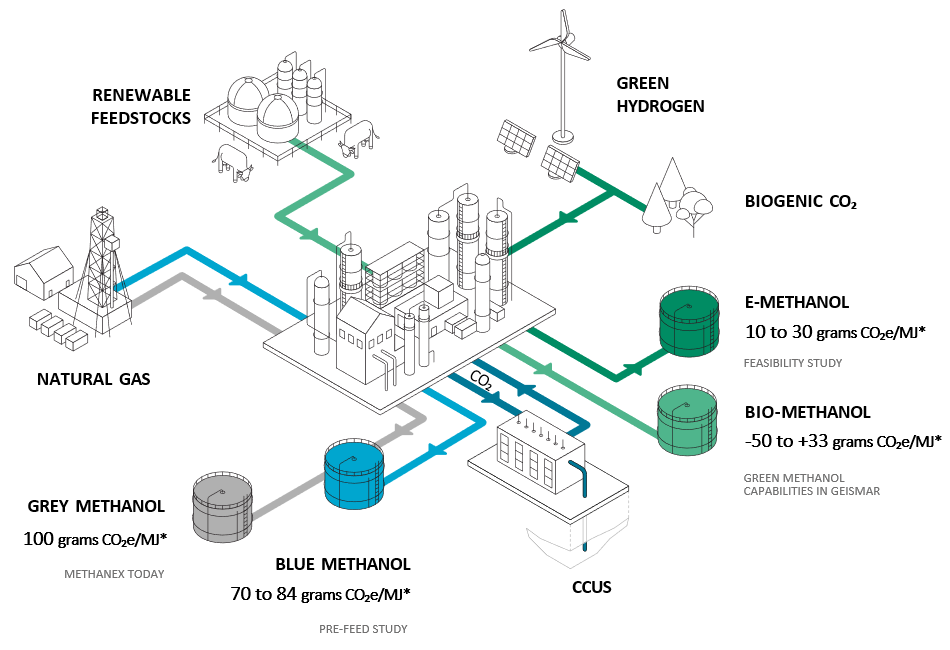Multiple methanol pathways
Methanol can be made using carbon capture technology, with renewable feedstocks, or from green hydrogen combined with recycled carbon dioxide (CO₂).Methanex is exploring these multiple pathways as part of its work to progress low-carbon solutions.
To learn more, visit page 18 of the 2024 Sustainability Report.

*All lifecycle values of grams CO2e/MJ are approximate
Emissions values courtesy of Argus Media 2024 and the Methanol Institute.


 Biomass
Biomass